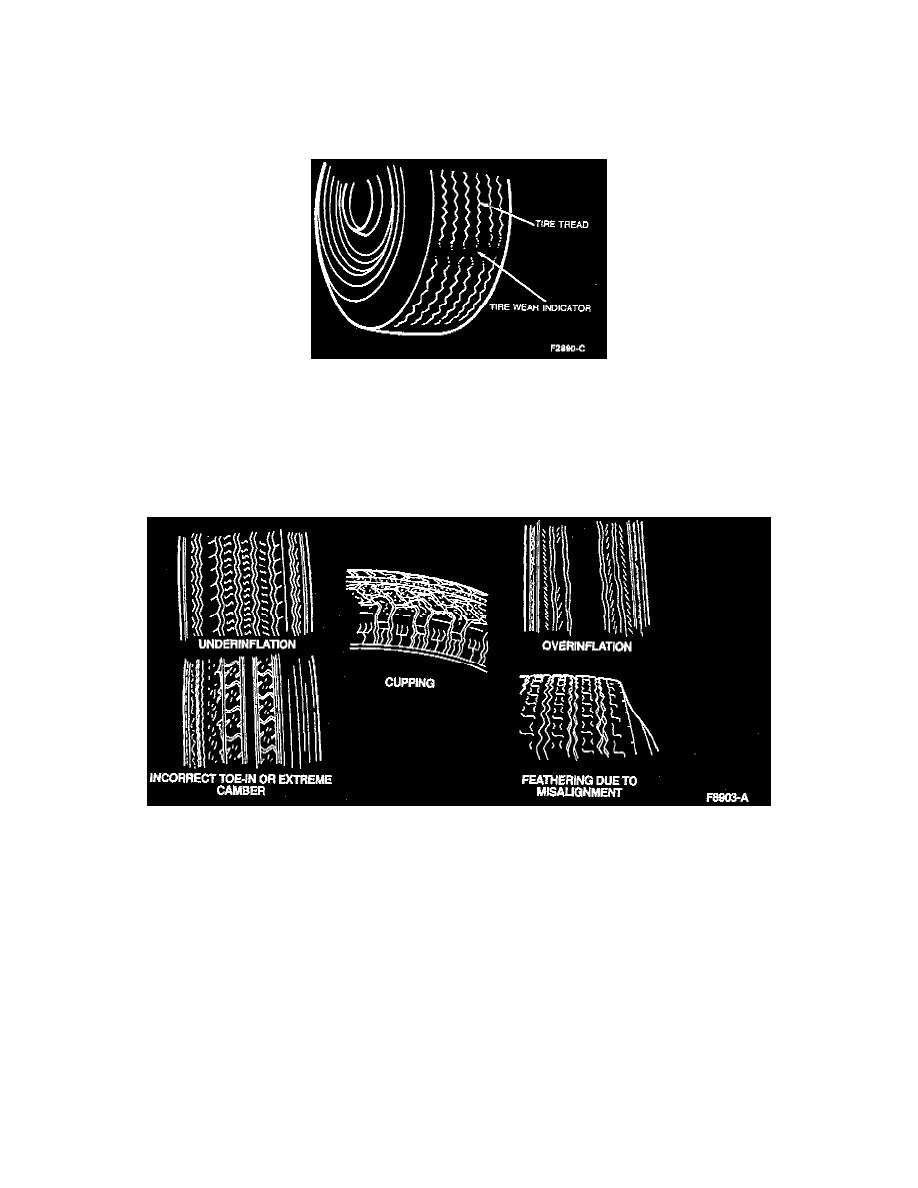F 350 4WD Pickup V8-351 5.8L VIN H EFI (1997)

Original equipment tires have built-in tread wear indicators to show when tires need replacement. These indicators will appear as 12.7-mm (1/2-inch)
wide bands when the tire tread depth becomes 1.58 mm (1/16 inch). When the indicators appear in two or more adjacent grooves, at three locations
around the tire, or when cord or fabric is exposed, tire replacement due to tread wear is necessary.
Tread Wear Indicators
The original equipment tires have built-in tread wear indicators to show when tires need replacement. These indicators will appear as 12.7-mm
(1/2-inch) wide bands when the tire tread depth becomes 1.58 mm (1/16 inch). When the indicators appear in two or more adjacent grooves, at three
locations around the tire, or when cord or fabric is exposed, tire replacement due to tread wear is required.
Wheel and Tire Checking
1. Inspect tires for wear. The original equipment tires have built-in tread wear indicators to show when tires need replacement. Abnormal or
excessive wear can be caused by incorrect wheel alignment, wheel/tire imbalance or improper tire pressure.
2. Inspect to determine if the following conditions apply:
^
Incorrect mounting
^
Misalignment
^
Loose wheel bearings
^
Bent wheels
^
Cupping or scalloping of tires from imbalance
^
Possible loose or worn steering connecting rod, drag link and pitman arm
^
Underinflation or mechanical irregularities such as out-of-balance condition of wheel or tire and bent or damaged wheel
^
Loose, damaged or worn front suspension parts
NOTE: Tires that show irregularities and definite roughness must be replaced.
Road Test
DESCRIPTION
Vibration, roughness, tramp, shimmy and thump can be caused by excessive tire or wheel runout, worn or cupped tires, or wheel and tire imbalance.
These conditions can also be caused by rough or undulating road surfaces. Driving the vehicle on different types of road surfaces will indicate if the
road surfaces are actually causing the condition.
